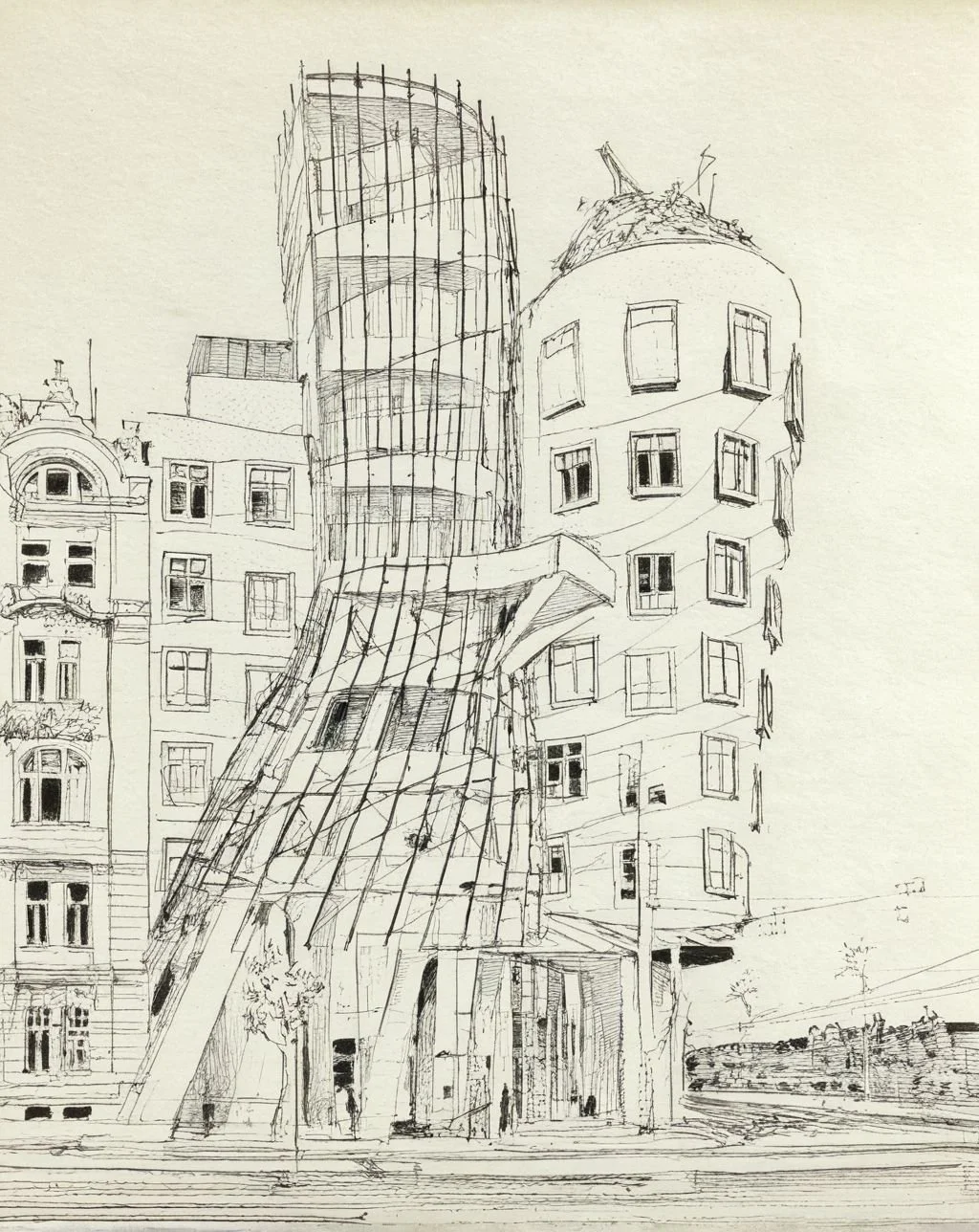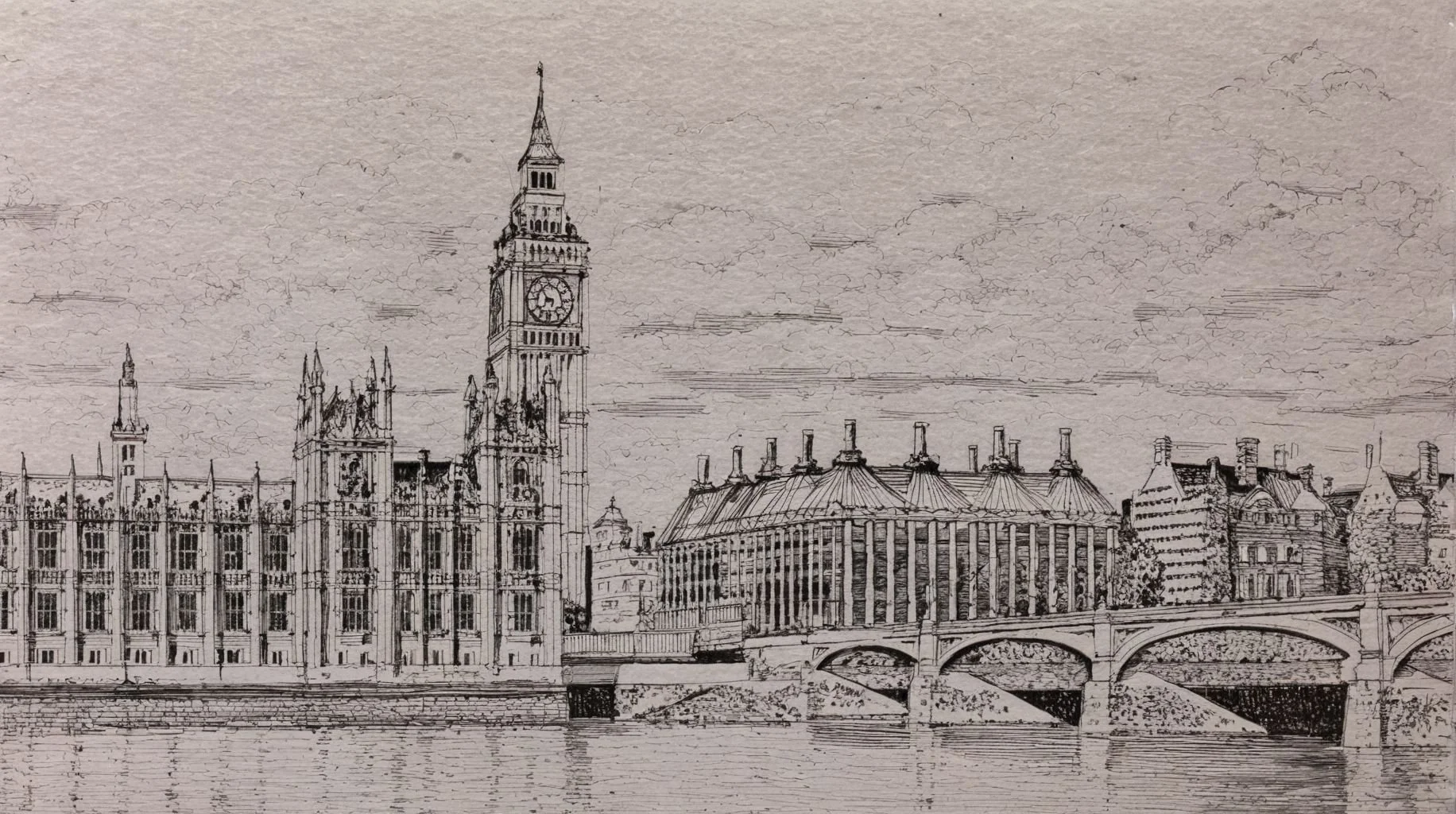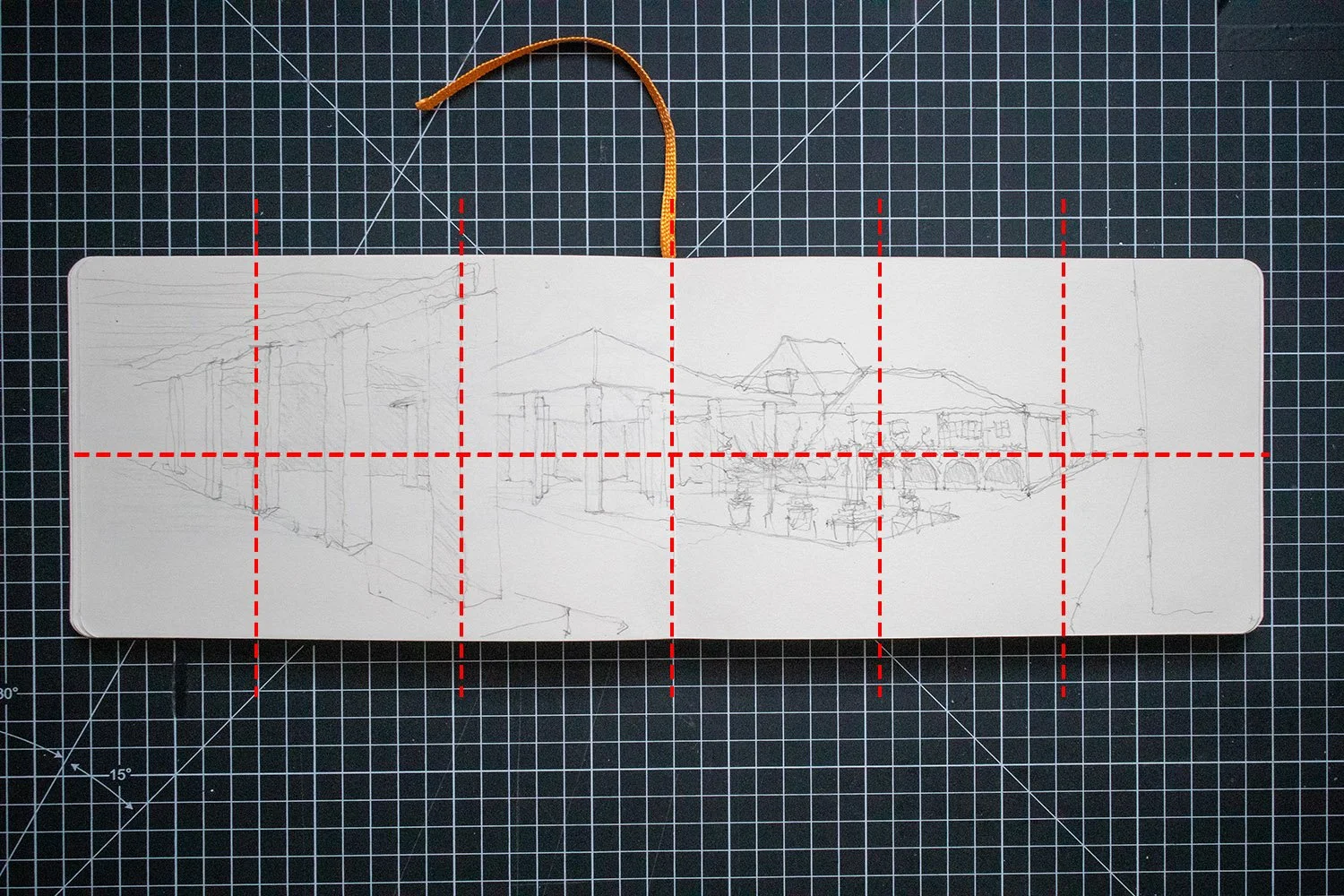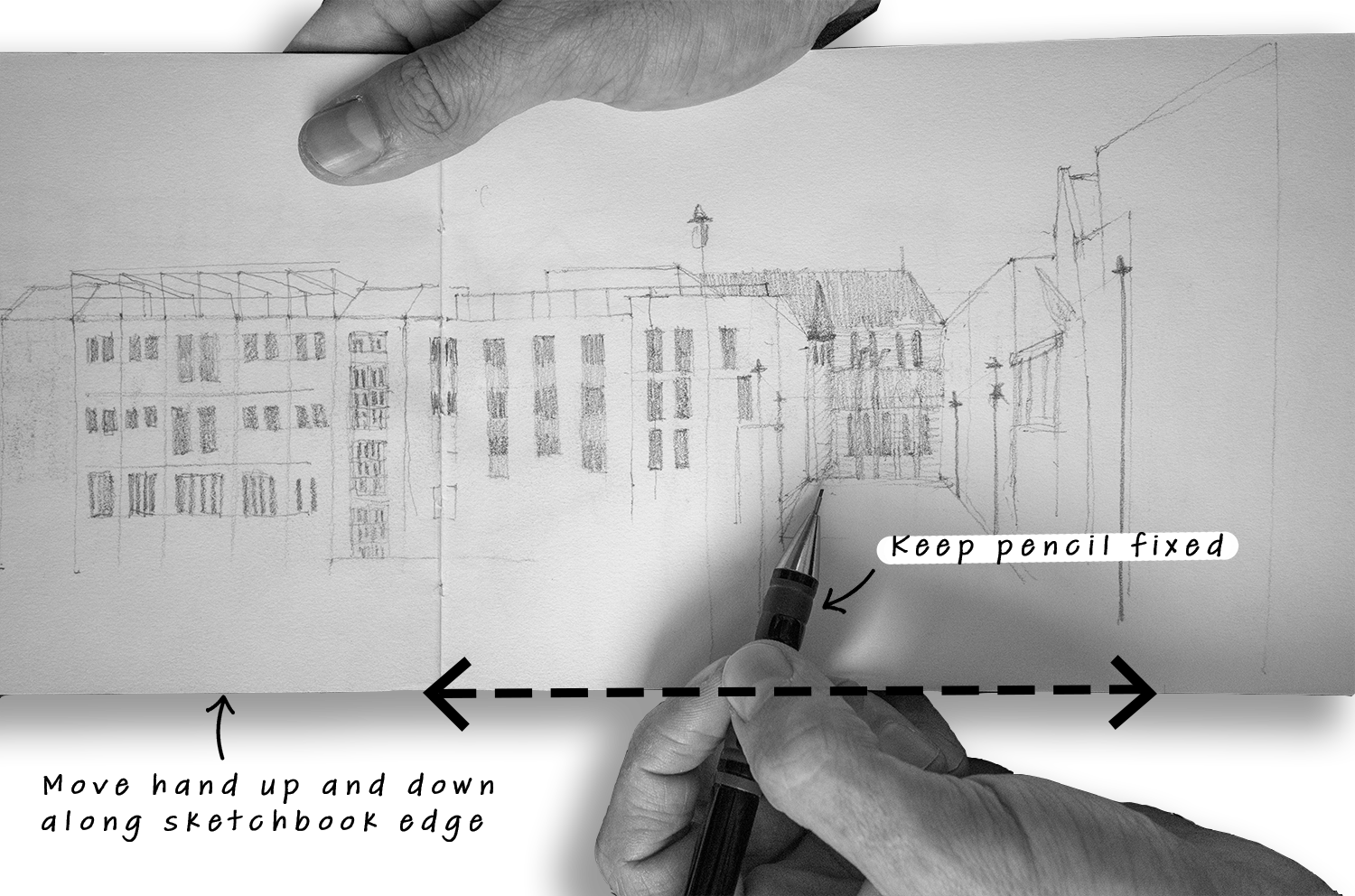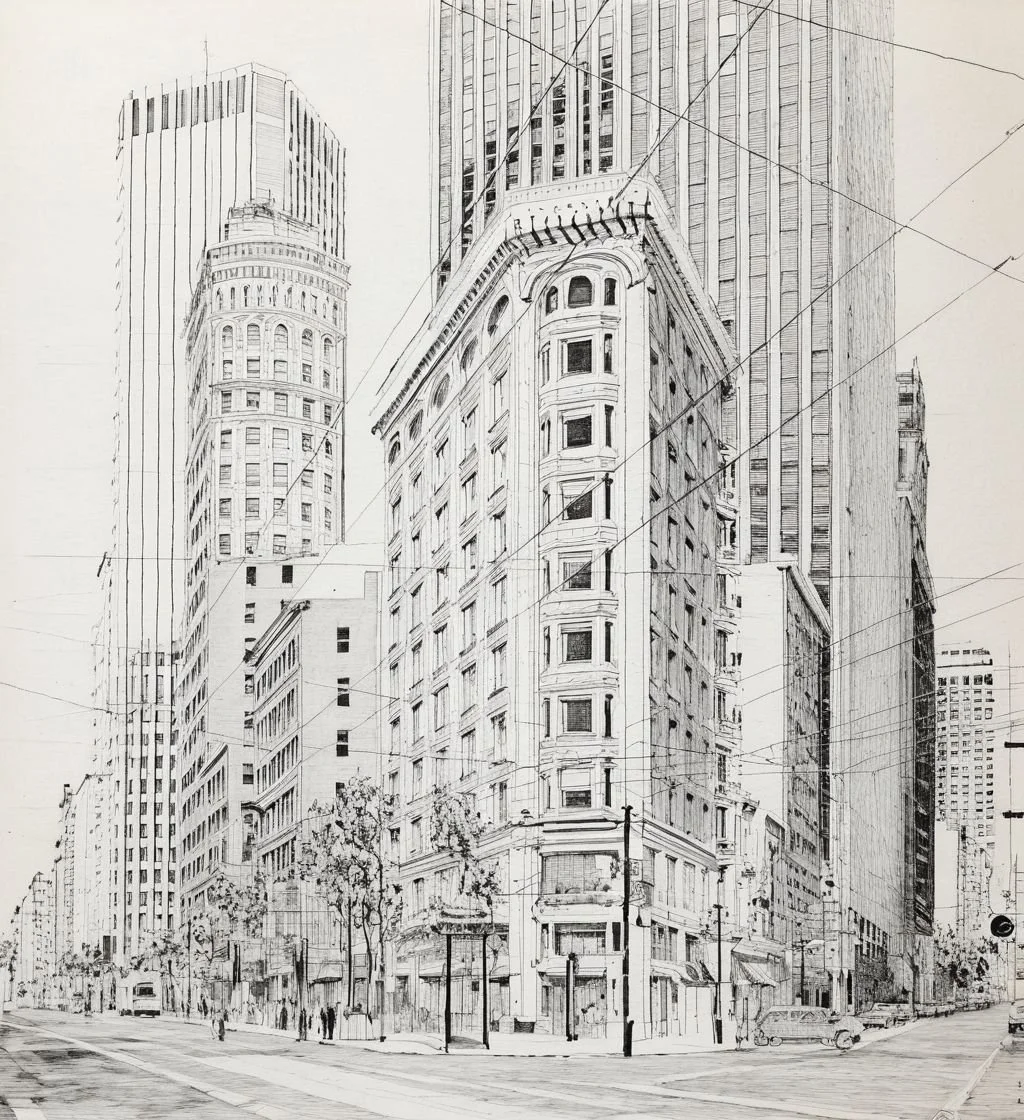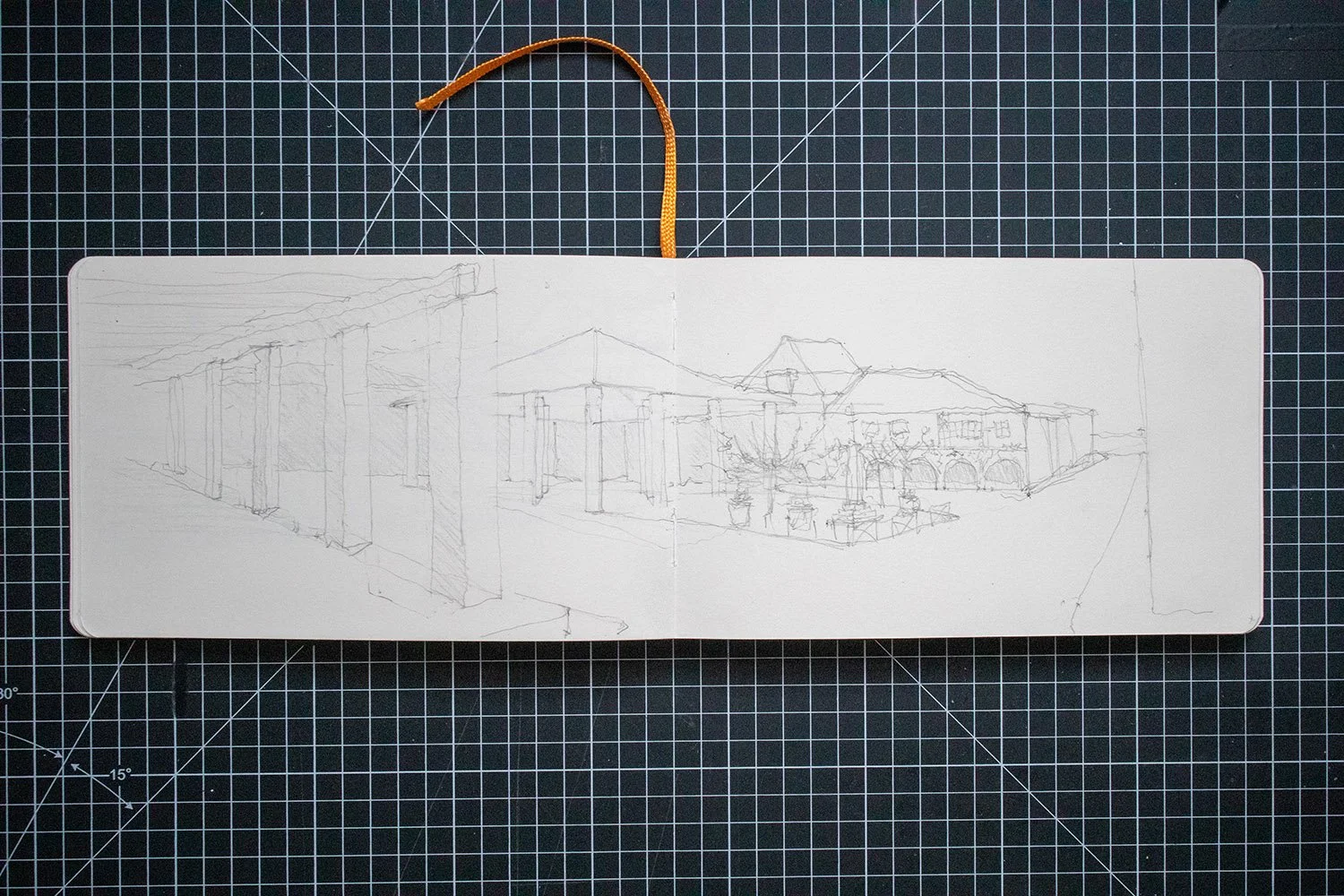How to Sketch like an Architect: Must know tips.
Introduction
The ability to sketch like an architect is still a fundamental skill even in the digital age.
Architecture students learn how to sketch like an architect by standing in public squares sketching classical buildings.
Sketching the environment around you is a fundamental way of improving your sketch technique. Not only will this improve your drawing skills but also improve your understanding of architectural detail and space.
To help you improve your architectural drawing skills, we have put together this helpful guide full of tips and techniques you need to learn.
Remember becoming a master of architectural drawing takes years so always carry a sketchbook and pencil and keep practising!
What is architectural sketching?
Free hand sketching is an important tool for architects to communicate their ideas from conceptual thought to paper. An initial concept is usually explored through sketching first and then refined with the use of CAD as the design progress and requires more detail. Another fundamental use of architectural sketching is to quickly present ideas to clients, builders and contractors.
Do architects really still draw by hand?
It is tempting to focus on developing CAD skills in the pursuit of employability, as designing digitally with the use of CAD software is commonplace in the modern architecture industry.
That being said, having the skills to sketch is still an integral part of the design process and a very desirable quality for employers now so more than ever as good sketchers are now more scarce.
Sketching is a fundamental stage for the initial design process as it allows an architect to visualise and explore ideas in a variety of ways. Architectural sketching also allows an architect to quickly draw out ideas during a meeting or site visit, which is a powerful way of explaining concepts to clients.
9 Must know tips to sketch like an architect
1 Set out proportions
Before drawing your subject a good way to plan a sketch is to quickly draw a grid on your sketchbook page and set out your view by drawing the subject in its most simple form to capture the correct scale and proportions.
To help you sketch like an architect, begin by drawing the grid and form lightly with a hard pencil as sketching is free hand and a bit of trial and error is inevitable as you learn the proportions of your subject.
2 Work out the perspective
The use of a horizon line, vanishing point(s) and converging straight lines are the parameters you will use to establish the rules of perspective for drawing architecture.
To start, draw a horizon line (a horizontal line that divides sky and land) across your page and then place a vanishing point along the horizon line to create a one-point perspective for your sketch. Place two vanishing points for the use of a two-point perspective, and so on…
Use your vanishing point(s) as a marker for all straight lines to converge and use these straight lines as guides to draw your architecture in.
3 How to create straight lines
This is a very important sketching technique to create straight lines while sketching freehand practice the technique of moving your hand and arm not the pencil.
To do this rest your pencil hand on the edge of your sketchbook and move your hand up and down the edge.
Grip your pencil high or low depending on where you want to draw a straight line but always keep your fingers fixed. Rotate your sketchbook and use different edges for vertical and horizontal lines or whatever angle you desire.
Using a hardback sketchbook is recommended, you can find a sketchbook similar to the one in this blog here.
4 Create depth in your architectural drawing with shading
Experiment with different shading and hatching techniques to create depth and realism in your architectural sketches.
Two common types of shading are horizontal hatching and cross hatching. Shading provides another layer of detail to your drawing. Use it to create the effect of shadowing from natural light or create subtle ambient occlusion to bring out architectural details.
5 Incorporate the use of line weights
As in other architectural drawings, the use of line weight in sketching establishes a hierarchy of layers and depth.
For example, the foreground architecture may be drawn in a heavier (thicker) line weight and background objects or landscapes may be drawn in a lighter (thinner) line weight.
To sketch like an architect and for best results incorporate line weights and shading techniques into your sketching.
6 Keep looking up
It is easy to keep your eyes fixed on the page and let your imagination run astray but remember sketching is a form of recording reality.
Keep glancing your eyes up at your subject to make sure you are drawing accurately. This is an important part of the sketch like an architect process as every move of the pencil should be an informed decision.
It is important to keep scanning the architectural details to train yourself to sketch with accuracy which will improve your sketching skills faster and result in a better sketch.
7 Sketch with purpose
Do not be precious over your sketches as they hardly ever turn out how we envisioned them. For this reason, drawings are often scrapped halfway through if not off to a good start.
Being able to sketch like an architect does not necessarily mean sketching a masterpiece every time. Architectural sketches don’t need to be visually stunning to be good sketches. Sketching is primarily a communication and investigation tool.
You will develop your drawing skills faster by seeing a sketch through to completion rather than by starting over again and again never getting over the first hurdle.
8 Carry the right tools
The type of sketchbook and tools you should use is down to personal preference. We recommend around an A5 size landscape sketchbook that is hardback with heavy textured gsm paper. Drawing with a hardback sketchbook allows you to rest your hand and wrist on the page.
Choosing a heavy gsm paper with texture feels more tactile when drawings and prevents a pen from bleeding over to the next page.
Rather than traditional pencils, a selection of mechanical pencils is more practical, ranging from hard to soft lead, as well as a range of pens so easily switched depending on the effect or techniques you are creating. Rotring pens come in a variety of pen weights and are very popular pens with architects.
9 Use tracing paper
Architects use tracing paper to develop their sketches further into more refined designs by layering sketches. A tracing paper roll is an important tool to sketch like an architect that will improve your designs and architectural sketching.
FAQs related to How to Sketch like an Architect
Do architects need to be good at sketching?
It is not a necessity for an architect to be good at drawing, although it is a valuable skill to sketch like an architect. Sketching is fundamentally a communication tool, a popular and effective way architects can communicate their ideas is with digital tools and 3D modelling software. However, a basic use of sketching is beneficial for expressing design concepts effectively.
What drawing skills does an architect need?
Architects need to understand and be able to produce accurate architectural drawings such as; plans, elevations, sections, and perspectives, either by hand or digitally.
Can you still be an architect if you can't draw?
It is possible to become an architect even if you struggle to draw although be at a disadvantage. You are able to create detailed digital drawings without any natural drawing skills. As well as learning how to sketch like an architect and practising will improve your skills over time.

